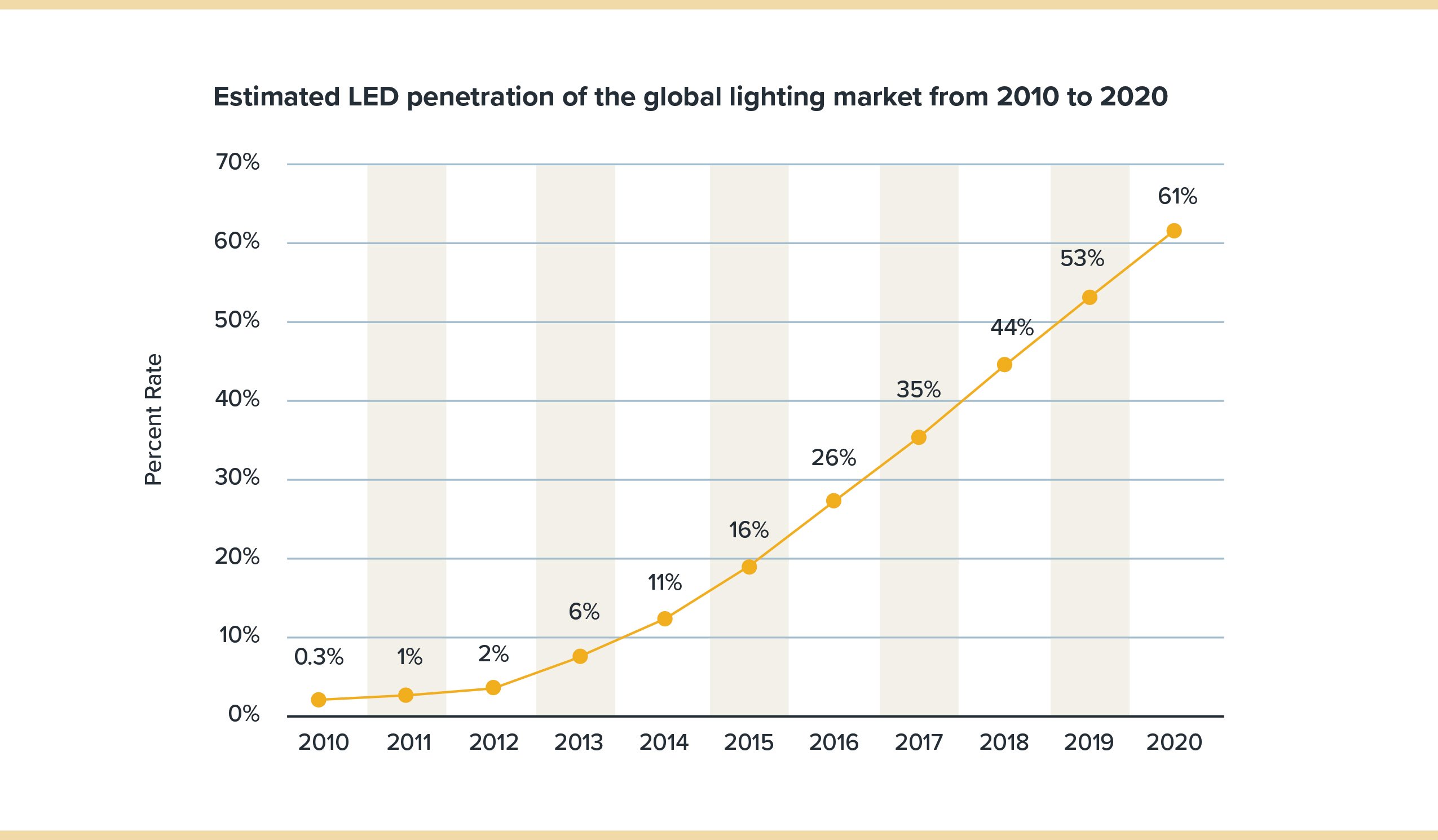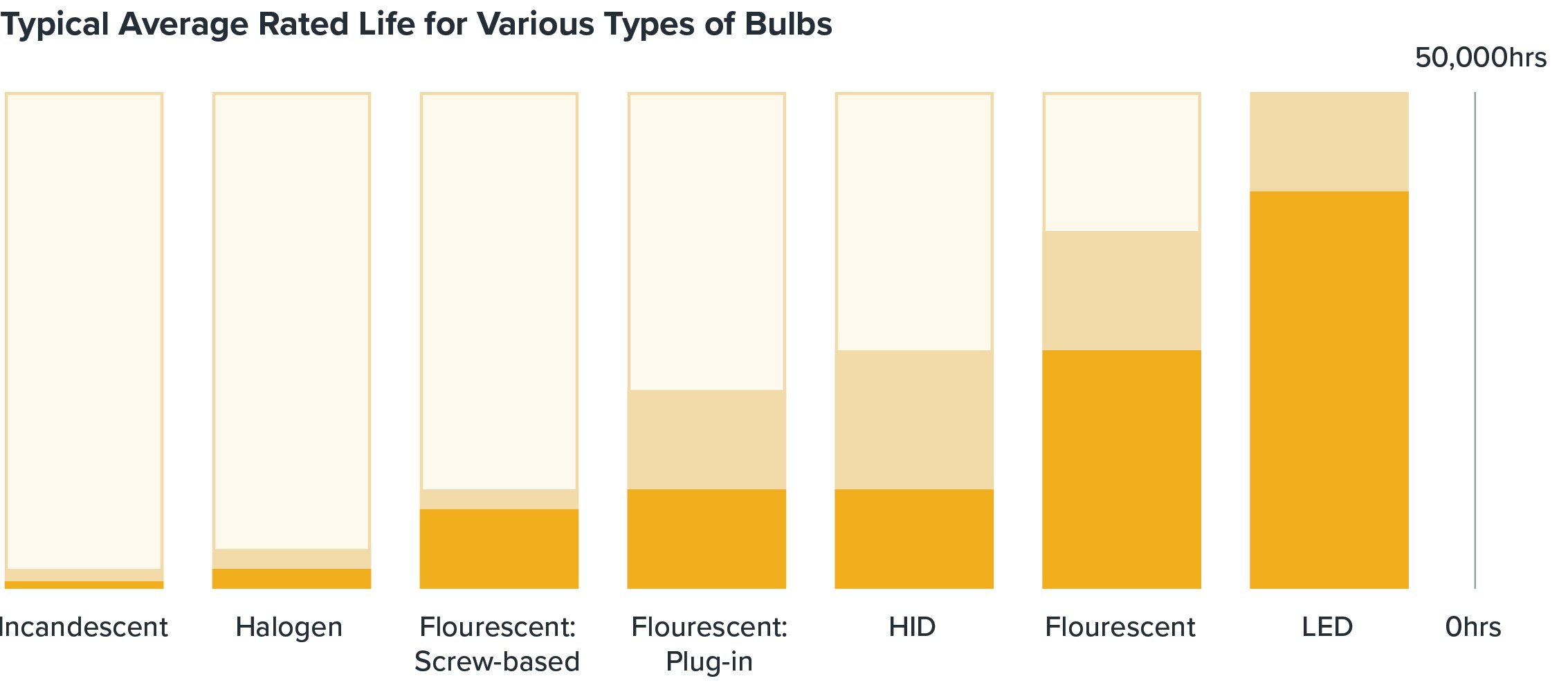Energy costs are among the largest operating expenses for business owners. Most of this expense is attributed to lighting. The amount of energy that lighting consumes depends on how many hours per day and days per year lights are in use, the number of fixtures, and most importantly – the type of lighting technology installed.
The types of lights a business uses can not only impact the bottom line but also influences the perception and behaviors of customers and employees.
Lighting is a critical aspect of design and property management. It can make products more appealing, leading to more customers and sales. Employee productivity, accuracy and even mental health are directly affected by the quality and performance of lighting. Well-lit spaces are also safer for everyone.

What Exactly is LED Lighting?
Stated simply, an LED is a semiconductor device that emits light when an electrical current is passed through it. LED lighting came into widespread commercial use in the 1990’s.
When compared to other commercial lighting types, LED lighting is far superior.
Traditional lighting, while cheap to install, ends up costing you more in the long run because of the lack of energy efficiency and short lifespan. Most commercial lighting systems waste 60-90% of the energy they consume. LED lighting uses very little infrared radiation (heat) to emit light, and has a significantly longer lifespan.
Additionally, traditional lighting produces poor lighting quality overall. Fluorescent lighting in particular emits harsh, irritating, flickering light that can affect the performance and health of your employees.
LED lighting is known to be of a superior quality over all other lighting types, emitting brighter, more vivid, powerful white light.
There is an environmental element at play as well. LED lights do not emit radiation and do not contain mercury. Other lighting systems emit pollutants into the atmosphere and when thrown away improperly have very harsh effects on our environment.

LED Lighting is an Imperative,
Not a Passing Fad
As this growth chart indicates, LED lighting has become the global standard and installations are growing at a steady base. The U.S. LED market reached close to $10 billion in 2019 with an estimated 61% of businesses upgrading to LED.
If you haven’t yet converted, now is a good time to seriously consider the option, as incandescent and fluorescent lighting will ultimately become obsolete.
The cost-saving benefits of LED lighting are more widely understood. Combined with awareness of sustainability and the importance of reducing our carbon footprint, this has led to rapid adoption of LED lighting.
By 2024, analysts predict the LED lighting market will reach $128 billion globally, with estimated savings of $18 billion in electricity costs and a reduction of 160 million metric tons of carbon dioxide emissions annually.










